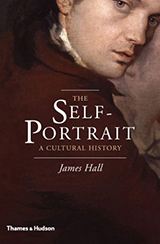 What Happens When an Artist Turns to the Most Obvious Subject?
What Happens When an Artist Turns to the Most Obvious Subject?
By James Hall
Thames & Hudson, $35.00, 288 pages
James Hall’s The Self-Portrait: A Cultural History presents a detailed analysis of how and why self-portraits were made and received throughout history. The book begins with some of the earliest extant self-portraits of the late medieval period and traces the greater acceptance and importance of the self-portrait through the 20th and into the 21st century. This volume, from art history publisher Thames and Hudson, is a lovely object in itself; the hardback edition has thick, expensive-feeling pages and more than 100 nicely printed full-color images. Although smaller than coffee-table size, the printing of this book is suitable as a coffee-table book. The text is at once informative and accessible. Most readers with even a slight art background (probably a high-school or college level art appreciation class) will know a large number, although probably not all, of the artists included in this text. While the book occasionally uses technical language, Hall is writing for a general audience and educated readers should not have any difficulty. One of the most interesting moments is Hall’s explosion of the myth that self-portraits are somehow related to the increasing availability of flat crystal mirrors. The book does spend most of its time in the late Renaissance and mid-19th centuries, so readers who are interested in either of those time periods are encouraged to seek out a copy.
Reviewed by Katie Richards
[amazon text=Buy On Amazon&asin=050023910X][amazon text=Buy On Amazon&template=carousel&asin=050023910X]
